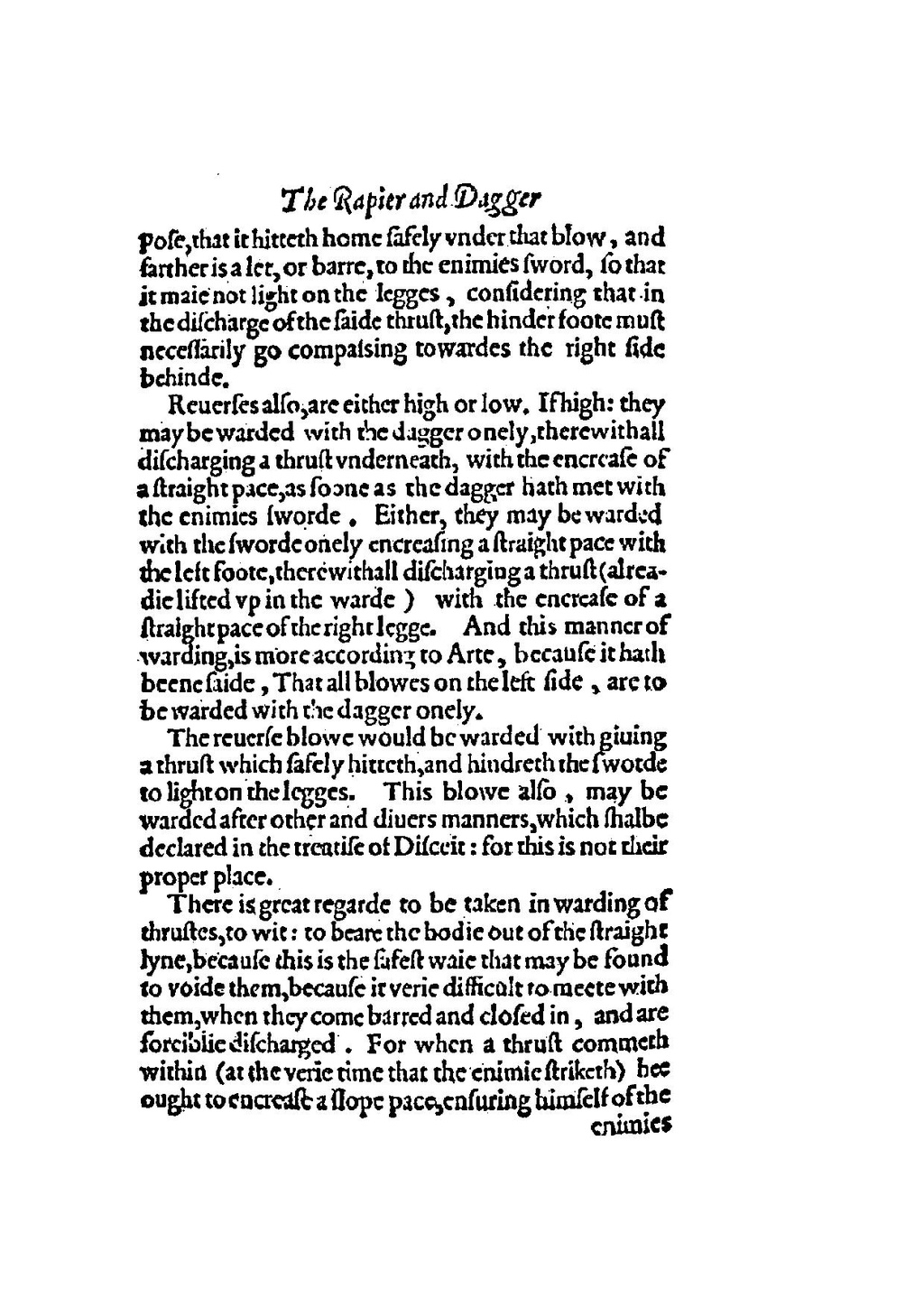pose, that it hitteth home safely vnder that blow, and farther is a let, or barre, to the enimies sword, so that it maie not light on the legges, considering that in the discharge of the saide thrust, the hinder foote must necessarily go compassing towardes the right side behinde.
Reuerses also, are either high or low. If high: they may be warded with the dagger onely, therewithall discharging a thrust vnderneath, with the encrease of a straight pace, as soone as the dagger hath met with the enimies sworde. Either, they may be warded with the sworde onely encreasing a straight pace with the left foote, therewithall discharging a thrust (alreadie lifted vp in the warde) with the encrease of a straight pace of the right legge. And this manner of warding, is more according to Arte, because it hath beene saide, That all blowes on the left side, are to be warded with the dagger onely.
The reuerse blowe would be warded with giuing a thrust which safely hitteth, and hindreth the swotde to light on the legges. This blowe also, may be warded after other and diuers manners, which shalbe declared in the treatise of Disceit: for this is not their proper place.
There is great regarde to be taken in warding of thrustes, to wit: to beare the bodie out of the straight lyne, because this is the safest waie that may be found to voide them, because it verie difficult to meete with them, when they come barred and closed in, and are forciblie discharged. For when a thrust commeth within (at the verie time that the enimie striketh) hee ought to encrease a slope pace, ensuring himself of the
enemies

